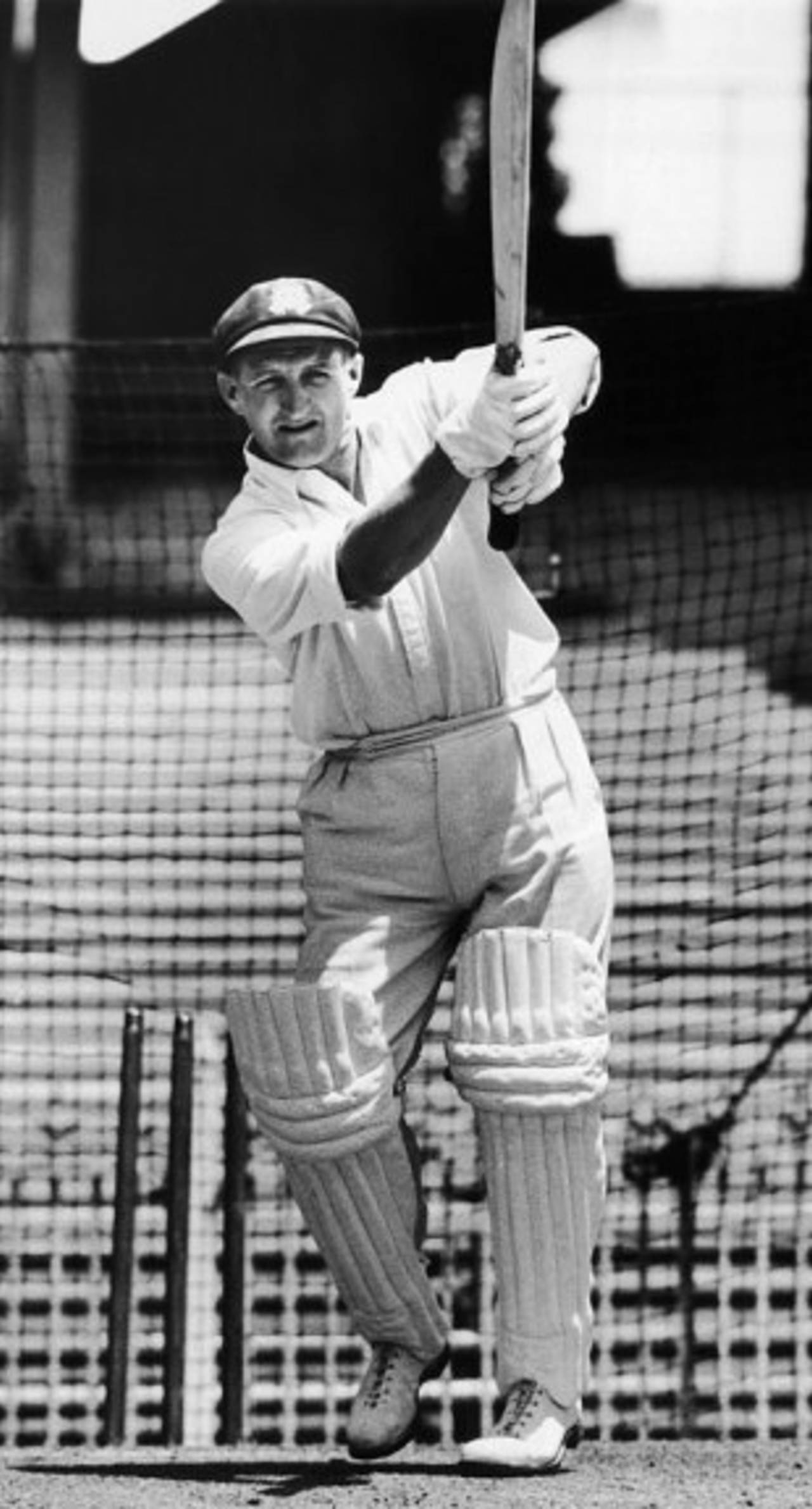These words, like so many before them, are being assembled at an old Blackwood desk beneath a portrait of
Les Favell.
In a sense, I suppose the striking, weather-beaten countenance of my favourite cricketer in oils is something of a shrine. Mind you, no bells are rung, incense burned or pujas performed. There is no need for ceremony. It is what is carried in the heart that matters most.
Les may be a muse, I don't really know. Certainly he has been an inspiration and always will be. That he has been dead nearly 17 years now doesn't change things.
It is 32 years since I covered my first Test match for Australian consumption, and in that time I have had the good fortune to see and meet, and in many cases get to know, some fine men who have also been wonderful cricketers. Indeed, some are quite famous and boast records of extraordinary distinction. Fond as I am of some of these men and the memories they have provided, they will never supplant Les in my affections.
Leslie Ernest Favell is my favourite cricketer, for I came to cricket because of him. He was that great. Born in Adelaide, South Australia, immediately after World War II, I have no recollection of cricket without Les Favell. It is simple as that.
Of course, there have been greater cricketers than Favell. After all, if Test cricket is the gauge in such matters, he made only 19 appearances for Australia for 757 runs at 27.03 with one century and five fifties.
It is true that as an adolescent I was incapable of an objective observation or a reasoned argument about Les. He was without peer and that was that. Even now, as retirement beckons, I will not give ground. Indeed I still haven't quite forgiven Norm O'Neill for running out Les for 45 in the tied Test
in Brisbane in December 1960. Les had just struck Alf Valentine for successive sixes and was at the height of his powers.
Three Test matches later he was dropped, and he never played for Australia again. I was there for his last Test and how I wished that Gerry Alexander had not held on to those catches. How I still wish that he had not held on to those catches off Frank Worrell and Wes Hall.
Les was, first and foremost, a good bloke with an abiding affection for cricket people whether they were players, administrators, journalists, spectators. He was principally an entertainer, and it is no coincidence that his autobiography was entitled By Hook or by Cut. He was the people's cricketer and when he died from cancer of the kidneys in June 1987, more than a thousand people placed flowers on his coffin.
Alongside the coffin was a table on which was placed a photograph of him wearing with customary pride his South Australian blazer. Resting against the table was the Les Favell Stuart Surridge bat by which he had lived and died.
While it was always a joy to worship Favell, doing so was not always easy. As an opening batsman and gifted captain, his impulsiveness often tested the faith of his devotees just as it did the tolerance of the national selectors and the patience of the critics.
Like his good friend and ardent admirer and supporter Sir Donald Bradman, Favell began his career with the St George District Club in Sydney before moving to South Australia to pursue a first-class career in the summer of 1951-52.
In the foreword to Les' book, Sir Donald wrote: "Throughout his long career Les set an example as a player and as an individual which can only be the envy of others. His vast accumulation of runs in first-class cricket are a record of his prowess, but they do not tell of the personality and character which were stamped on those performances. He never scorned a challenge, rather did he welcome it. The most frequent criticism heard of Les during his career was that his batting was too risky. What a pity all players didn't have the same fault."
Les' first-class career lasted from November 1951 to February 1970, and in all he amassed 12,379 runs at 36.62 with 27 hundreds and 67 fifties. He captained South Australia on 95 occasions, leading them to the then Sheffield Shield in 1963-64 and 1968-69, and was skipper of the Australian Second XI to New Zealand in 1967.
His one Test century came at the Corporation Ground
in Madras in January 1960 when, with commendable if somewhat uncharacteristic patience, he batted throughout the first day.
I'm certain that it is the rich recollections of Les and his humour and generosity of spirit as well as his daring batting and intuitive, aggressive captaincy that help to keep me young at heart and passionate about the glorious game.
I remember as a schoolboy jumping from moving trams and running through the heart of Adelaide, across the elegant city bridge spanning the River Torrens and into the Creswell Gardens on the south-eastern side of perhaps the most beautiful Test-match ground on earth. Breathing uneasily, I would look through the heavy, bending boughs of the Moreton Bay fig trees to see if Les' nameplate was at the bottom of the lovely old scoreboard and a dancing white light beside it. If it was, I would burst with joy much as I do now at the many wonderful memories of my favourite cricketer - Leslie Ernest Favell, MBE, 1929-1987.
Mike Coward is a cricket writer with the Australian. This article was first published in Wisden Asia Cricket magazine in 2004
